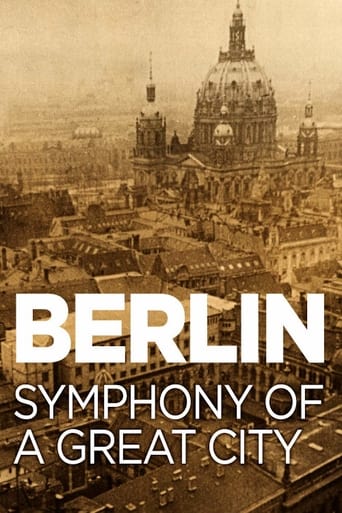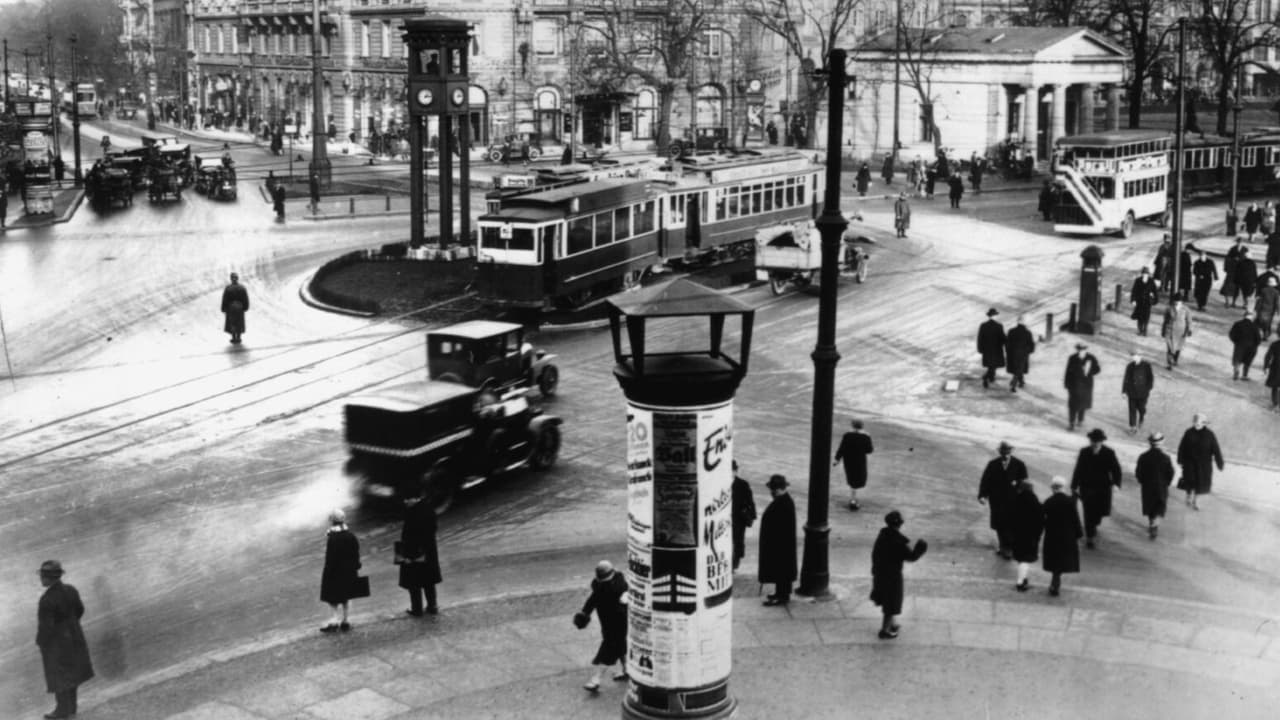Horst in Translation (filmreviews@web.de)
"Berlin: Die Sinfonie der Grosstadt" or "Berlin: Symphony of a Great City" is not only evidence of the fact that "Großstadt" was once written with 2 s, but it is also a black-and-white silent film documentary about Germany's capital. This one is from almost 90 years ago, so it includes recordings exclusively from before the 2 wars. I have lived in Berlin for almost my entire life, which made me especially curious about this film that runs slightly over an hour. Unfortunately, I did not really make a connection with Ruttmann's work here. It's certainly nice to see people from back then and how they just live and interact with each other, but honestly without my knowledge that this is Berlin, I probably would not even have thought of that. There aren't really any famous places or so to see or anything you could recognize if you know Berlin. This is also why this documentary does not have half the charm I wished it would have. Not recommended.
FerdinandVonGalitzien
Many times the most exciting trip is right around the corner; you don't need to go to some distant place as this Herr Graf often does ( of course common people can't afford it anyway ) or travel to exotic countries to discover and enjoy new landscapes and the different customs and accents of their people. A perfect example can be found in the film "Berlin – Die Sinfonie der Großstadt" (1927) wherein its director, Herr Walter Ruttmann, our avant-garde and eccentric cicerone, takes the audience on a special and experimental trip around the city of Berlin.It's certainly very complicated for a conservative German count, accustomed to simple classic film narrative, to describe this film but basically it is a modern, audacious, poetic, suggestive and unique portrait of a city that no longer exists. It is an historical picture of Weimar Berlin enriched by brilliant editing (that sometimes gives the viewer a sense of vertigo) and dazzling images. The film depicts the daily lives of the citizens of Berlin: young and old, rich and poor, people going about routine jobs in factory or office and the thrilling night life. Trains, machines and architecture are all part of a symphony of frenzied activity orchestrated by Herr Ruttmann in a superb and imaginative homage to the German capital city and its inhabitants.And now, if you'll allow me, I must temporarily take my leave because this German Count must wander through the empty Berlin Weimar streets.Herr Graf Ferdinand Von Galitzien http://ferdinandvongalitzien.blogspot.com
MartinHafer
"Berlin: Symphony of a Great City" is an art film that is pretty dull. However, it certainly does have a lot of historical importance. After all, the film shows a typical day in this city circa 1927--and by the end of WWII, most of it had been destroyed. In other words, it allows the viewer and historians to look back to a city and way of life that are gone.As for the movie, though, I just can't see why it has a current high rating of 7.9. This is very high--especially when it's a film with no real plot and which many viewers will become bored with after a while. After all, it consists of hundreds of clips all strung together to tell a tale of the city during a day--and that is all. It's competently made and of passing interest only.I like art films and documentaries--but this is a case of too much.
jan onderwater
Classic and splendid film that is still fascinating to watch. Walter Ruttmann did not make a documentary about Berlin, although 75 after date it certainly can be considered a document about a Berlin that is no more, he composed a film that tries to catch the essence of the atmosphere of a big city. The film is a good example of the art style Neue Sachlichkeit (functionalism): it is a cross-section of Berlin's life in which every element is equally important, shown without comment and in its totality it is the expression of the joy of Berlin's life. It is not a film about the life of Berliners, it is Berlin seen as a living mechanism.The subtitle referring to Großstadt (big city) is the key, it could have been any other city. The idea as such is not the makers' prerogative. Elsewhere the fascination with the hustle and bustle of the big city was also present as was the idea to catch this on this film and in music: e.g. Cavalcanti in France made a film about Paris and the US Ferde Grofé composed his musical suite Metropolis (1927) with New York in his mind. The irony of all these endeavours is that the film or music is abstract, but that the result is a romanticizing view.Ruttmann made several abstract film and he refers to them in the beginning with abstract horizontal lines dissolving to rail way tracks. In my view the rest of the film is also abstract. Although we see real people and situations the brilliant editing constantly keeps the film abstract: the situation and the people in a shot are not important, important is the juxtaposition to other shots: is the composition varied enough?. Thus we see a filmic composition (in stead of a musical one) and the subtitle Symphony is just. As with every composition the theme has to be modulated to keep it interesting and it is here where the weakness of the film is. The building up from the start and elaboration up to the beginning of the afternoon is splendid, precise and exiting; but from that point it bogs down for a while: we see another shop, another street etc. without adding much to what already was. It may be that Ruttmann was aware of this, note how quickly he finishes the afternoon to continue with the night-life and then immediately all the excitement and filmic fun is back.In an 1939 interview cameraman Karl Freund said that everything possible was filmed using only candid cameras. I have my doubts. Let's take for example the sequence of the drowning lady: how could he make an extreme close-up with a hidden camera in such a brilliant angle? (By the way: if she really tried to commit suicide, was Freund himself not only one of the gaping bystanders without doing anything to save her?) How could he foresee the right angle to film the prostitute picking up her client near the cornered shop window? Not that it matters for the quality of the film, but it proofs the old adagium: filming is deceiving.


 AD
AD
